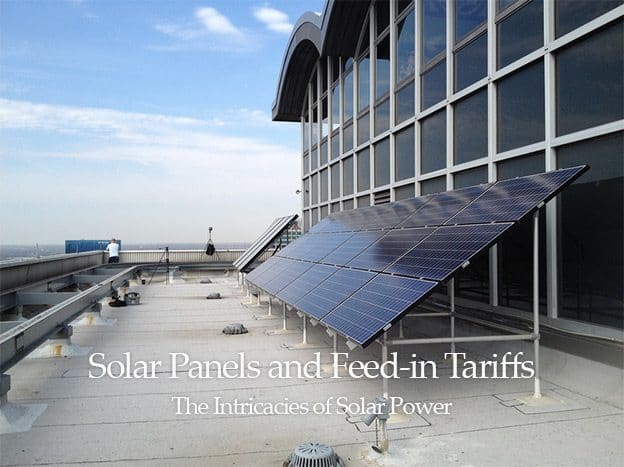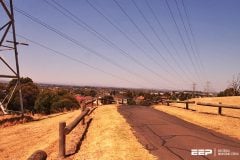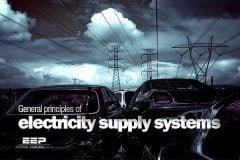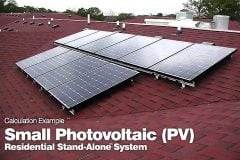Photoelectric Effect
At its most basic, Solar Power is the conversion of sunlight into electricity; either directly using photovoltaics (PV), or indirectly using concentrated solar power (CSP). CSP systems use a combination of lenses/mirrors and tracking systems to focus a large area of sunlight into a small beam, and are mainly of use on large sites.
Photovoltaics convert light into electric current using the photoelectric effect, and can be used in small cells utilised for personal applications.

Solar Photovoltaic (PV) panels convert solar energy into electricity that can be used in the home. By converting sunlight into clean, green energy, homeowners can reduce their carbon footprint, make savings on bills, and receive guaranteed payments for the electricity that they produce.
Solar Power in the UK
Solar Panels are widely and effectively used across Europe, particularly in countries such as Germany, which receive similar levels of sunlight per year. This makes them a viable option for use in the UK. Solar PV can still produce sufficient levels of electricity for use in your home.
In April 2010, the Government introduced the Feed-in Tariff (FIT) as an incentive scheme to encourage homeowners to invest in solar PV. The FIT ensures payment of 43.3 pence for each unit of electricity that their domestic solar system produces, irrespective of whether they use that electricity in their home or not.
Additionally, the FIT also pays 3 pence per unit for electricity not used in the home and exported to the National Grid. Currently Feed-in Tariff payments are guaranteed for 25 years.
Many solar providers now not only provide the option for customers to invest in a solar PV system for their roof, but will also have free solar offerings, where a system can be installed on their roof for free.
Why Choose Solar Power?
Investing in a solar PV system will receive an average of 11% rate of return on their initial investment, and the system usually pays for itself within 10 years, although FIT payments will continue for the full 25 years. Compounded with the savings that they can make on their electricity bills by using the power produced from their panels, investing in solar is financially very beneficial.
Free solar schemes have arisen, where customers cannot afford or do not want the initial cost of buying solar panels for their roof. Under free-solar schemes, a solar provider will install a solar PV system for free on a homeowner’s roof, keeping the money from the FIT payments to cover the cost of installing the panels.
Installing solar PV can help to reduce household energy bills as you can use the electricity produced by the panels instead of taking it from the National Grid. As energy prices increase over time, the savings that you make will be greater. Solar PV also allows homeowners to significantly reduce their carbon footprint by benefiting from clean, green electricity produced in their home.
Converting Sunlight to Electricity: How Does it Work?
 The current generation of PV solar cells are made from layers of silicon which have been doped with small quantities of different chemicals. The doping materials are chosen to give the resulting material a very specific property: they allow light to ‘knock’ electrons free from their orbits in sufficient numbers to generate a direct current (DC). When photons of light with a suitable wavelength hit the p-n junction and are absorbed, they transfer some of their energy to some of the electrons on the material.
The current generation of PV solar cells are made from layers of silicon which have been doped with small quantities of different chemicals. The doping materials are chosen to give the resulting material a very specific property: they allow light to ‘knock’ electrons free from their orbits in sufficient numbers to generate a direct current (DC). When photons of light with a suitable wavelength hit the p-n junction and are absorbed, they transfer some of their energy to some of the electrons on the material.
These electrons flow through the panels and create an electrical DC current. The inverter installed as part of the system will convert this DC into usable alternating current (AC).
Installation Guide
After a system and design has been agreed with your solar installer, they will arrive on the agreed installation date and erect scaffolding to access the roof.
For a standard on-roof PV system, roof anchors will be screwed to the rafters underneath the existing roof tiles. The aluminium bars which make up the frame are then locked into these anchors and screwed into place. These bars make up the frame to which the panels are then attached.
Panels are then attached to the frame using at least four clamps per panel. The panels are then wired into the inverter. Once all the panels have been installed and the alignment has been checked and approved, the DC wiring from the panels on the roof is positioned to enter the property in order to be connected to the electrics in your home. In some cases this is achieved by running the wire under the eaves and directly into the loft.
Other system options include in-roof panels which are integrated into the roof and have a lessened visual impact, PV tile systems and flat roof mounted systems. Your solar installer should be able to speak to you about what would be the best system for your home’s solar needs.











Thanks for the great article, I have been campaigning to get the government to change there view on solar tariffs, We need more investment in green technology not less.